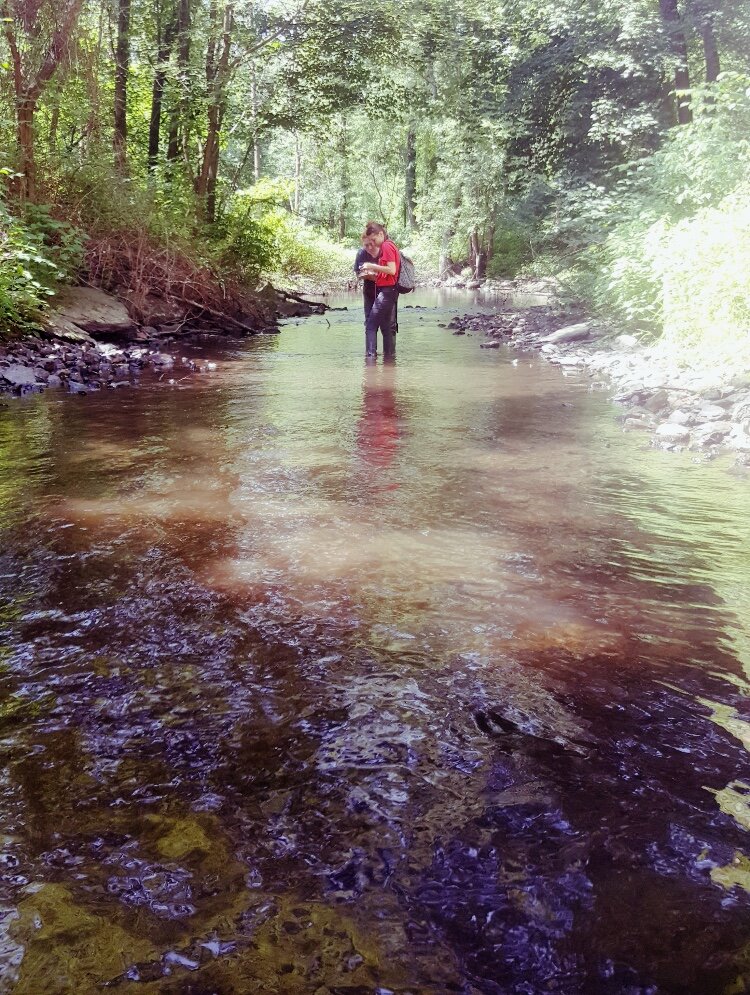Colleen Bradley ‘20 Studies Climate Change’s Impact on Two Local Ecosystems
The Hudson Valley area is home to many local ecosystems, such as Fall Kill Creek and Sprout Creek, affected daily by climate change. For Colleen Bradley ‘20, these locations served as the primary platform for her three-credit research project. Bradley majors in Environmental Science at Marist and has a minor in Biology. Her research findings included a baseline of the local streams’ health, specifically how temperature, intense storm events and nutrient loading are changing over time, and the potential growth for cyanobacteria.
Cyanobacteria are blue-green algae, microscopic organisms that can be potentially harmful to humans, native aquatic plants and other organisms. This bacteria can grow in warmer water temperatures of 21°C and high nutrient concentration of 0.1 mg/L (milligram per liter). Toxins are released in this type of bacteria that can harm the fresh water supply as well. With this thought in mind, Bradley chose to study 1400-meter sections of Fall Kill Creek and Sprout Creek as the organisms pass through the local landscapes.
Bradley and Marist Professor Zion Klos, PhD in Environmental Science in Hydrology, placed white tube structures along the side of the creeks and inserted sensors to collect data on temperature, pressure, solubility and conductivity.
“Every 20 meters I measured abiotic factors that would create an environment for cyanobacteria, such as temperature, nitrogen and phosphorous concentrations, and just other important health parameters, such as dissolved oxygen, conductivity and pH,” Bradley said. There would be intense storms some days, and she would then go and collect data from each site through runoff and groundwater exchange.
Bradley has continued her research from this summer in the fall semester. Since then, she has grasped an understanding of the streams’ conditions that changed before and after a rainstorm event. From her results, she could identify the locations where temperature and nutrient concentrations were increasing and then decreasing below the threshold.
“It was found that the temperature was highest in Fall Kill creek with 23.3 °C compared to Sprout Creek 21.9°C and nutrient concentrations were highest in Sprout Creek, with nitrate 2.6 mg/L and phosphate 14.1 mg/L compared to Fall Kill with nitrate 1.2 mg/L and phosphate 7.2 mg/L,” Bradley said.
“The results are then used to identify what is happening on the landscape and how to remediate what is causing the nutrient spikes in the streams. The areas of concern identified are potential habitats for cyanobacteria.”
All in all, the goal of this experiment was to compare the two streams, Fall Kill Creek and Sprout Creek, that both experience the same climate change events in order to gain a better understanding of how “high temperatures, storm events and nutrient loading influence potential cyanobacteria growth in our local area for the future health of both streams.”
Bradley will continue to interpret her data for the remainder of the semester and will then be presenting her research at the American Geophysical Union fall conference in San Francisco in December. She will be attending to share her findings “in hopes to apply what I have learned and researched in the Hudson River Valley to a greater scale for all fresh water systems.”
In the meantime, the future environmentalist will prepare her poster for the upcoming conference with data and detailed figures to share the results of her dedicated work.

